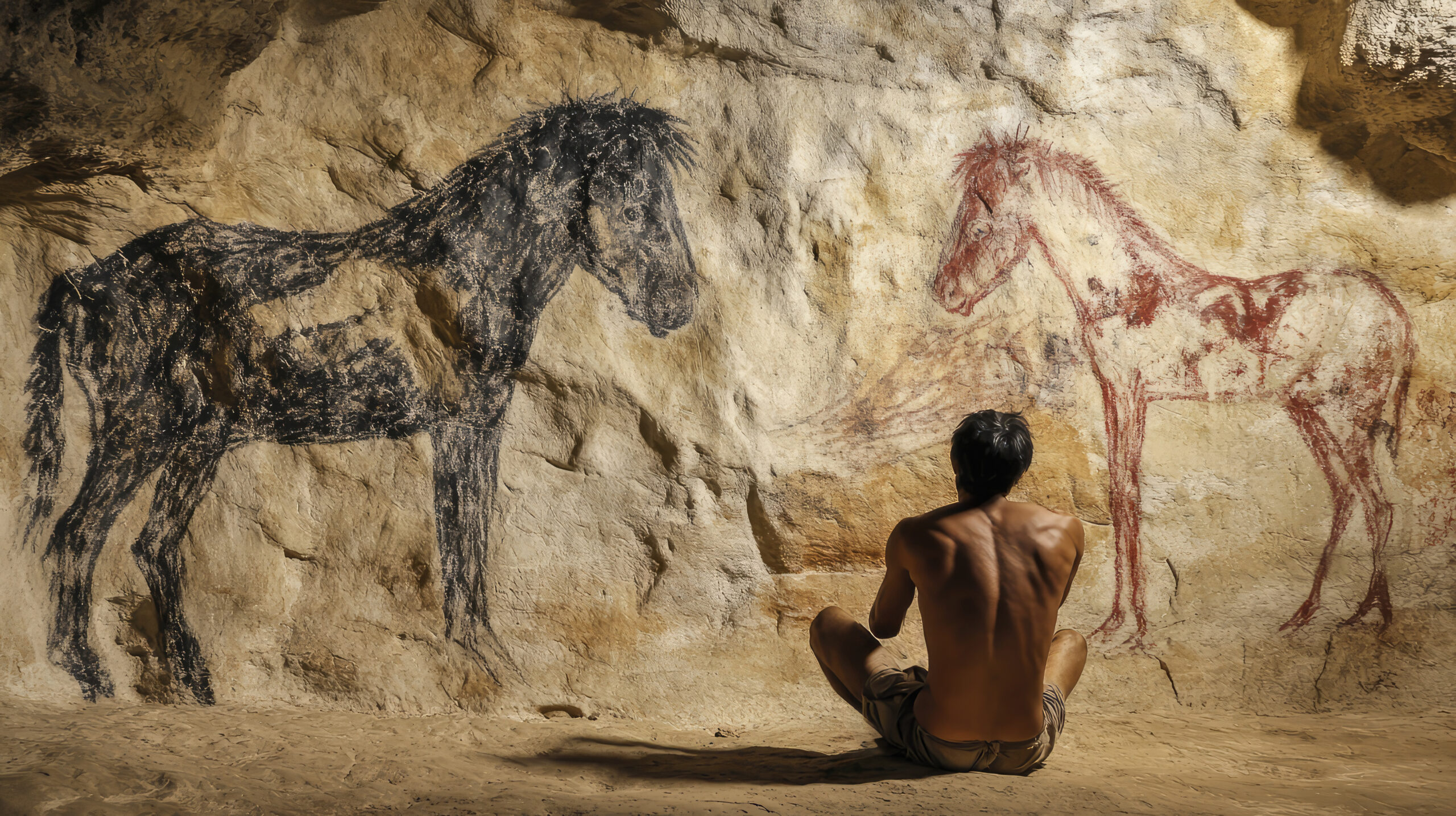Introduction
Overview of the Beholderen
The concept of the Beholderen is a fascinating and complex one, deeply rooted in mythology and folklore. Originating from ancient texts, the Beholderen has evolved over centuries to become a symbol of power, fear, and mystery. This article aims to delve deep into the origins, characteristics, and modern interpretations of the Beholderen, exploring its significance in various cultural contexts.
Definition and Origin
The term “Beholderen” is believed to have originated from ancient myths, where it was often depicted as a powerful and omnipresent being. In these early tales, the Beholderen was considered a guardian of knowledge and secrets, possessing the ability to see everything that transpired in the world. The name itself suggests a connection to vision or observation, hinting at the creature’s all-seeing nature.
Significance in Modern Times
In contemporary culture, the Beholderen has transcended its mythological roots to become a symbol of surveillance, control, and the omnipresence of authority. It is often used in literature, film, and art to represent the tension between individual freedom and societal control. Understanding the Beholderen allows us to explore these themes in greater depth and consider their relevance in our modern world.
Importance of Understanding the Beholderen
The Beholderen is more than just a myth; it is a reflection of human fears, desires, and the eternal struggle for power. By studying the Beholderen, we gain insight into the psychological and cultural forces that shape our world. This exploration not only enriches our understanding of ancient cultures but also provides valuable perspectives on contemporary issues.
The Mythology and History of the Beholderen
Early References in Ancient Texts
The Beholderen first appears in ancient texts, where it is described as a formidable creature with unparalleled wisdom and sight. These early references suggest that the Beholderen was revered as a divine being, capable of seeing into the past, present, and future. In various civilizations, the Beholderen was associated with gods and deities, often serving as a mediator between the mortal world and the divine.
Cultural Significance in Various Civilizations
The Beholderen held a unique place in the mythologies of different cultures. In some traditions, it was seen as a benevolent protector, guiding humans towards enlightenment. In others, it was a fearsome enforcer of divine justice, punishing those who strayed from the righteous path. The dual nature of the Beholderen – as both a guardian and a judge – reflects the complex relationship between humans and the divine.
Interpretations Across Different Regions
As the legend of the Beholderen spread across different regions, various interpretations emerged. In Eastern cultures, the Beholderen was often depicted as a wise and ancient dragon, embodying the principles of balance and harmony. In Western traditions, it took on a more ominous form, often associated with the darker aspects of the human psyche. These regional variations highlight the adaptability of the Beholderen myth, allowing it to resonate with diverse audiences.
Evolution of the Beholderen Concept
Over time, the concept of the Beholderen evolved, transitioning from a mythological figure to a symbol of modern concerns. As societies grew more complex, the Beholderen came to represent the growing power of surveillance and control. This evolution is evident in its portrayal in art, literature, and popular culture, where it is often used to explore themes of authority, power, and resistance.
Transition from Myth to Modern Symbolism
The transition of the Beholderen from a mythological being to a modern symbol is a testament to its enduring relevance. In today’s world, where issues of privacy, surveillance, and control are more pressing than ever, the Beholderen serves as a powerful metaphor for the challenges we face. Its omnipresent gaze reminds us of the tension between freedom and security, a theme that resonates across cultures and generations.
Influence on Art and Literature
The Beholderen has had a profound impact on art and literature, inspiring countless works across different mediums. From classic paintings to contemporary novels, the Beholderen has been portrayed in various forms, each reflecting the unique concerns of its time. Its influence is particularly evident in the fantasy genre, where it often appears as a powerful and enigmatic creature, embodying the mysteries of the unknown.
Characteristics of the Beholderen
Physical Description
The physical appearance of the Beholderen varies across different interpretations, but certain characteristics remain consistent. It is often depicted as a massive, otherworldly being, with multiple eyes that allow it to see everything. These eyes are usually described as glowing orbs, each possessing the ability to peer into different realms or dimensions. The Beholderen’s body is often portrayed as serpentine or dragon-like, symbolizing its ancient and powerful nature.
Common Depictions in Art
In art, the Beholderen is frequently depicted as a terrifying yet awe-inspiring figure. Its many eyes are a focal point, symbolizing its all-seeing power and wisdom. Some artists choose to emphasize its more benevolent aspects, portraying it as a guardian of knowledge, while others focus on its darker, more ominous side, highlighting its role as a harbinger of doom.
Symbolic Representations
Symbolically, the Beholderen represents the duality of knowledge and power. Its all-seeing eyes are a metaphor for the pursuit of truth, but they also serve as a reminder of the dangers of absolute power. The Beholderen’s serpentine form further reinforces this duality, symbolizing both wisdom and danger, creation and destruction.
Behavioral Traits and Abilities
The Beholderen is often depicted as a creature of immense power and intelligence. It is said to possess the ability to see into the hearts and minds of individuals, discerning their true intentions and desires. This ability makes the Beholderen a formidable judge, capable of meting out justice with unwavering accuracy.
Mystical Powers
In addition to its all-seeing eyes, the Beholderen is believed to possess other mystical powers, such as the ability to manipulate time and space. Some legends suggest that it can travel between dimensions, accessing knowledge that is beyond the reach of mortal beings. This makes the Beholderen not only a powerful guardian but also a seeker of forbidden knowledge.
Role in Mythological Narratives
In mythological narratives, the Beholderen often plays the role of a guardian or gatekeeper, protecting sacred knowledge or ancient treasures. It is also depicted as a judge, punishing those who attempt to deceive or harm others. The Beholderen’s role in these stories reflects its dual nature as both a protector and a punisher, embodying the complex relationship between power and morality.
The Beholderen in Modern Culture
Representation in Movies and Television
The Beholderen has found a new life in modern culture, particularly in movies and television. Its iconic image – a massive, multi-eyed creature – has been adapted into various forms, often serving as a symbol of fear and control. In some films, the Beholderen is portrayed as a malevolent force, while in others, it is depicted as a misunderstood being with a tragic past.
Famous Portrayals
Some of the most famous portrayals of the Beholderen can be found in the fantasy and horror genres. In these works, the Beholderen is often depicted as a powerful antagonist, challenging heroes with its formidable abilities. Its presence in these stories adds an element of mystery and danger, making it a compelling figure in popular culture.
Influence on Modern Fantasy Genres
The Beholderen has had a significant influence on modern fantasy genres, particularly in the creation of iconic creatures and beings. Its unique blend of power, wisdom, and fear has inspired the development of similar characters in literature, video games, and other media. The Beholderen’s legacy can be seen in the many creatures that embody its characteristics, from all-seeing gods to fearsome dragons.
The Beholderen in Literature
In literature, the Beholderen is often used as a symbol to explore complex themes such as power, control, and the nature of knowledge. Its presence in these stories adds depth and intrigue, allowing authors to delve into the darker aspects of the human experience. The Beholderen’s influence on literature is particularly evident in works of fantasy and horror, where it serves as both a literal and metaphorical representation of fear.
Iconic Literary Works
Some of the most iconic literary works featuring the Beholderen include classic fantasy novels and modern horror stories. In these works, the Beholderen is often portrayed as a guardian of ancient secrets, challenging protagonists to confront their deepest fears. Its role in these stories reflects its enduring significance as a symbol of power and knowledge.
Analysis of Themes and Motifs
The themes and motifs associated with the Beholderen are rich and varied, reflecting its complex nature. In many stories, the Beholderen is used to explore the tension between freedom and control, as well as the dangers of unchecked power. Its presence in these narratives adds a layer of psychological depth, allowing readers to engage with the story on multiple levels.
The Psychological and Symbolic Meaning of the Beholderen
Symbolism in Human Psychology
The Beholderen is more than just a mythical creature; it is a powerful symbol in human psychology. Its all-seeing eyes represent the human desire for knowledge and the fear of being watched or controlled. This duality makes the Beholderen a compelling figure in psychological studies, where it is often used to explore themes of power, control, and the unconscious mind.
Representation of Fear and Power
In many cultures, the Beholderen is associated with fear and power, two emotions that are deeply intertwined in the human experience. Its omnipresent gaze serves as a reminder of the consequences of absolute power, while its fearsome appearance reflects the dangers of confronting the unknown. The Beholderen’s symbolism in this context is a reflection of the human struggle to balance these two powerful forces.
The Beholderen as a Metaphor for Control
The Beholderen is often used as a metaphor for control, particularly in the context of societal surveillance and authority. Its all-seeing eyes represent the pervasive nature of modern surveillance, while its role as a judge reflects the power dynamics at play in society. By understanding the Beholderen as a symbol of control, we can gain insight into the psychological and social forces that shape our world.
The Beholderen in Personal and Collective Unconscious
The Beholderen also holds significance in the realm of the personal and collective unconscious. Its presence in dreams and nightmares reflects the deep-seated fears and anxieties that reside in the human psyche. In Jungian analysis, the Beholderen can be seen as an archetype, representing the shadow side of the self – the aspects of our personality that we fear or reject.
Archetypes and Jungian Analysis
In Jungian psychology, the Beholderen can be understood as an archetype – a universal symbol that represents fundamental aspects of the human experience. Its all-seeing eyes and fearsome appearance reflect the shadow side of the self, the part of us that we often try to hide or suppress. By confronting the Beholderen in our dreams or in stories, we can gain insight into our own fears and desires, leading to greater self-awareness and personal growth.
Influence on Dreams and Nightmares
The Beholderen is a common figure in dreams and nightmares, where it often appears as a symbol of fear and control. Its presence in these dreams reflects the deep-seated anxieties that many people experience, particularly in relation to power dynamics and surveillance. By exploring the symbolism of the Beholderen in our dreams, we can gain insight into the psychological forces that shape our waking lives.
The Beholderen and Its Influence on Popular Media
Impact on Video Games
The Beholderen has had a significant impact on video games, particularly in the fantasy and horror genres. Its unique blend of power, mystery, and fear makes it a compelling antagonist, challenging players with its formidable abilities. The Beholderen’s influence can be seen in the design of many iconic video game characters, as well as in the themes and narratives of these games.
Popular Video Games Featuring the Beholderen
Some of the most popular video games featuring the Beholderen include fantasy RPGs and horror titles, where it often serves as a powerful boss or enemy. Its role in these games adds an element of challenge and intrigue, forcing players to confront their fears and test their skills. The Beholderen’s presence in these games reflects its enduring appeal as a symbol of power and mystery.
Role and Abilities in Gameplay
In gameplay, the Beholderen is often portrayed as a powerful and enigmatic figure, capable of manipulating time, space, and reality. Its abilities are typically tied to its all-seeing eyes, which allow it to anticipate the player’s moves and counter their actions. This makes the Beholderen a formidable opponent, requiring players to think strategically and act decisively in order to defeat it.
The Beholderen in Art and Design
The Beholderen has also had a significant impact on art and design, particularly in the realms of fantasy and horror. Its unique appearance – with its multiple eyes and serpentine form – makes it a popular subject for artists and designers, who often use it to explore themes of power, control, and the unknown. The Beholderen’s influence can be seen in everything from graphic novels to movie posters, where it serves as a symbol of mystery and fear.
Modern Artistic Interpretations
Modern artistic interpretations of the Beholderen vary widely, reflecting its complex and multifaceted nature. Some artists choose to emphasize its more fearsome aspects, portraying it as a monstrous creature with terrifying power. Others focus on its more mystical qualities, depicting it as a wise and ancient being with deep knowledge of the universe. These varied interpretations highlight the Beholderen’s enduring appeal as a symbol of the unknown.
Use in Graphic Novels and Comics
The Beholderen is a popular figure in graphic novels and comics, where it often serves as a powerful antagonist or enigmatic ally. Its presence in these stories adds an element of intrigue and danger, forcing the protagonists to confront their deepest fears and challenge their perceptions of reality. The Beholderen’s role in these narratives reflects its enduring significance as a symbol of power, control, and the unknown.
Conclusion
Recap of the Beholderen’s Impact
The Beholderen is more than just a mythological creature; it is a powerful symbol that has influenced art, literature, psychology, and popular culture for centuries. Its all-seeing eyes, fearsome appearance, and complex nature make it a compelling figure, embodying the dualities of power, fear, and knowledge.
Final Thoughts on the Beholderen’s Cultural Significance
The Beholderen’s enduring appeal lies in its ability to represent the most profound aspects of the human experience. Whether as a symbol of control, a metaphor for fear, or a reflection of the unknown, the Beholderen continues to captivate our imaginations and challenge our understanding of the world. Its influence on modern culture is a testament to its timeless relevance, making it a subject worthy of continued exploration.
FAQs
What is the origin of the Beholderen?
The Beholderen originates from ancient myths and folklore, where it was often depicted as a powerful and omnipresent being with the ability to see everything.
How has the concept of the Beholderen evolved over time?
The concept of the Beholderen has evolved from a mythological figure to a modern symbol of surveillance, control, and authority, reflecting contemporary concerns about power and privacy.
What are some modern representations of the Beholderen?
Modern representations of the Beholderen can be found in movies, literature, video games, and art, where it is often portrayed as a symbol of fear, power, and the unknown.
Why is the Beholderen a significant symbol in psychology?
The Beholderen is significant in psychology because it represents the human desire for knowledge, the fear of being watched or controlled, and the struggle between freedom and authority.
How has Beholderen influenced popular culture?
The Beholderen has influenced popular culture by inspiring the creation of iconic characters, themes, and narratives in movies, literature, video games, and art, particularly in the fantasy and horror genres.
see also Aeonscope Video Gaming: The Future of Immersive VR and AR Experiences





























+ There are no comments
Add yours